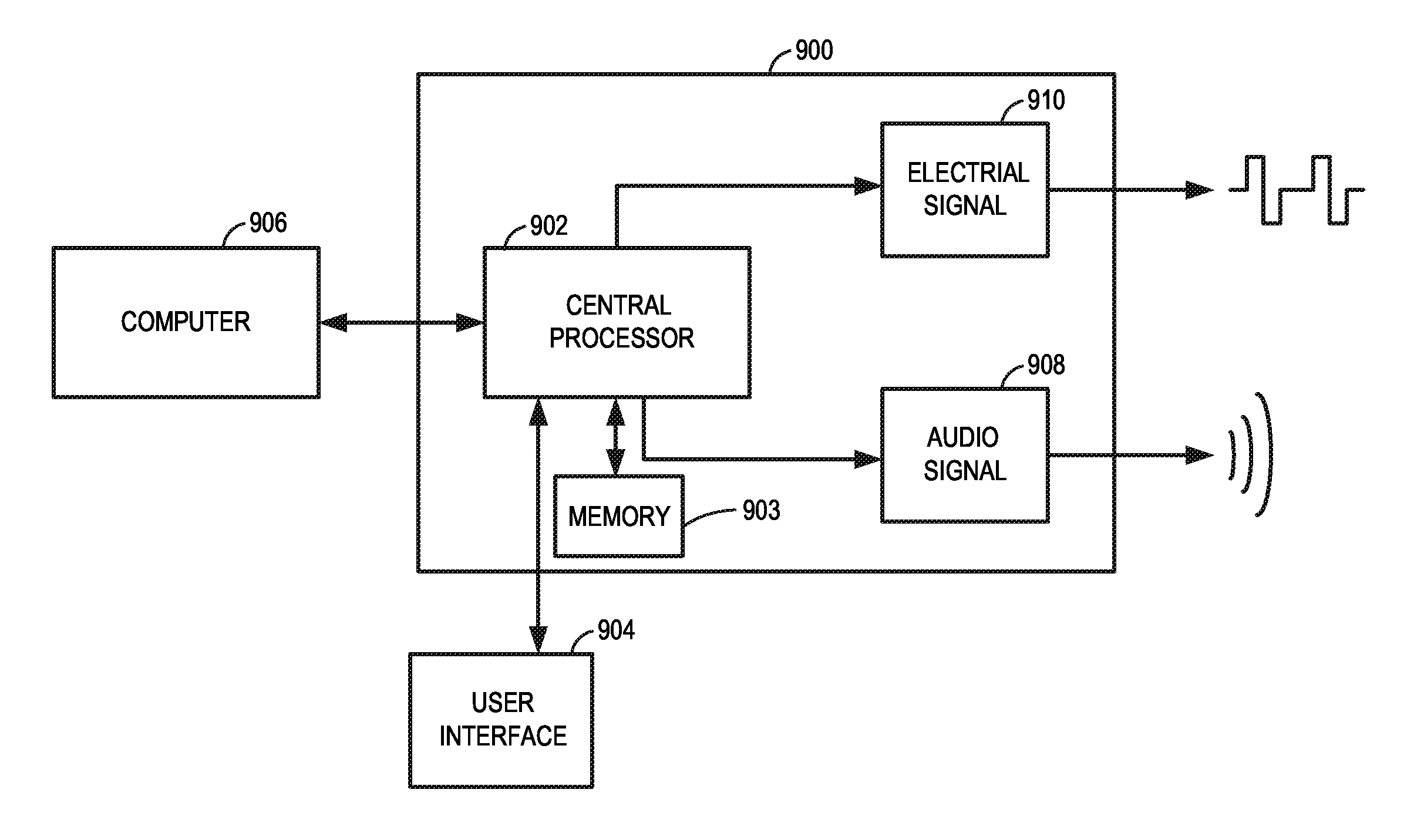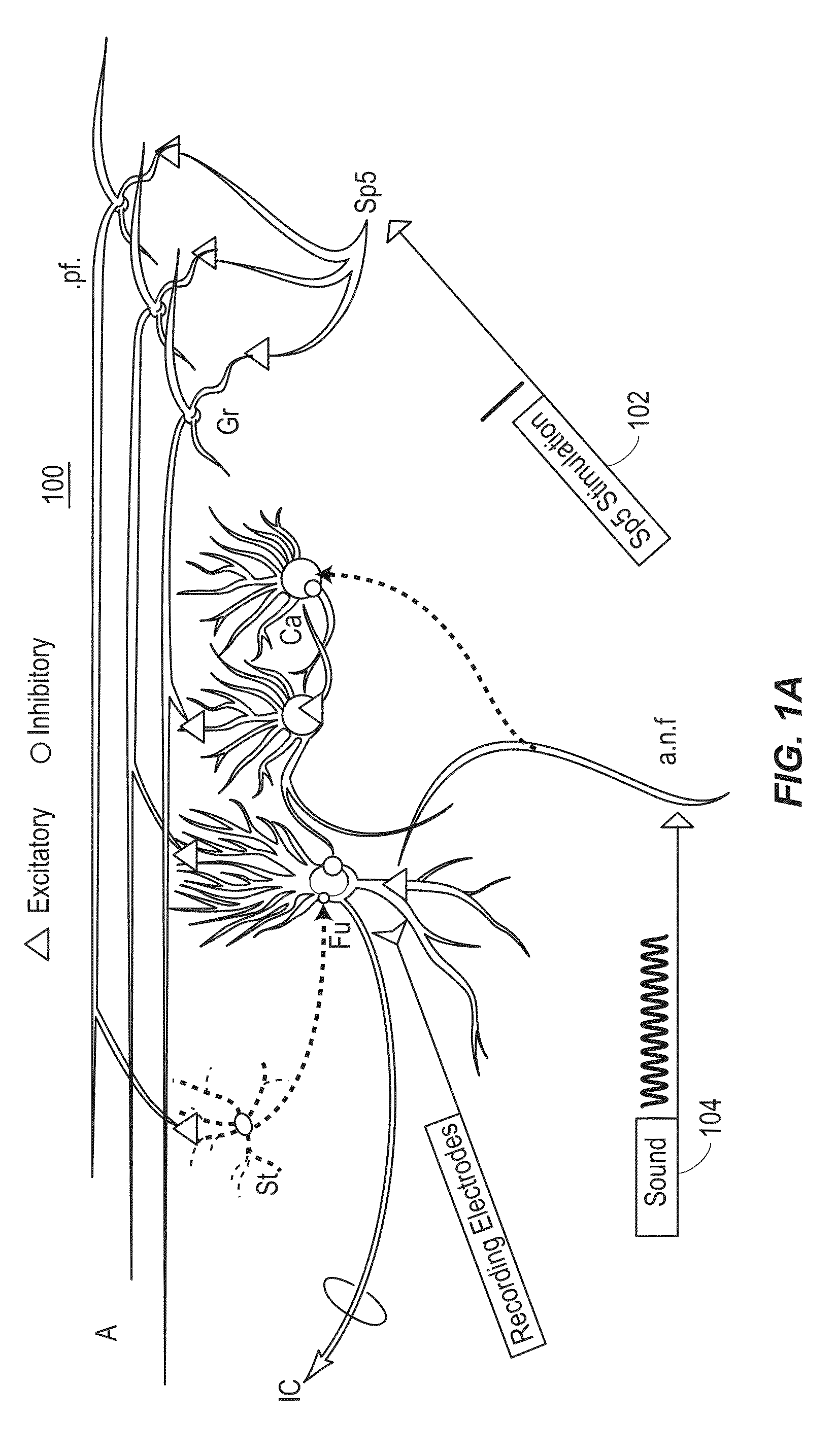Personalized auditory-somatosensory stimulation to treat tinnitus
a somatosensory and auditory technology, applied in the field of treatment and tinnitus, can solve the problems of inability to address, inability to reduce tinnitus, and inability to achieve widespread use of techniques, so as to reduce tinnitus and reduce tinnitus
- Summary
- Abstract
- Description
- Claims
- Application Information
AI Technical Summary
Benefits of technology
Problems solved by technology
Method used
Image
Examples
Embodiment Construction
[0065]Generally, examples are described for providing multisensory stimuli to reduce or eliminate phantom sound perception or tinnitus. Stimulation of both the somatosensory system and the auditory system is achieved, but in a counterintuitive, timed manner, in which spacing between auditory and somatosensory stimuli is used to activate spike-timing dependent plasticity in target neurons in such a manner that spontaneous activity is reduced, thereby reducing or removing tinnitus.
[0066]Conventional bimodal stimulation techniques relied upon simultaneous stimulation of systems, with the belief that contemporaneous triggering of vagal nerve stimulation, to stimulate neuromodulatory inputs to auditory cortex from nucleus basalis, with sound stimulation would treat such conditions as tinnitus by triggering remapping of the cortical topographic frequency map. Recent studies have shown that cortical remapping is not necessary for tinnitus. To develop the present techniques, however, bimoda...
PUM
 Login to View More
Login to View More Abstract
Description
Claims
Application Information
 Login to View More
Login to View More - R&D
- Intellectual Property
- Life Sciences
- Materials
- Tech Scout
- Unparalleled Data Quality
- Higher Quality Content
- 60% Fewer Hallucinations
Browse by: Latest US Patents, China's latest patents, Technical Efficacy Thesaurus, Application Domain, Technology Topic, Popular Technical Reports.
© 2025 PatSnap. All rights reserved.Legal|Privacy policy|Modern Slavery Act Transparency Statement|Sitemap|About US| Contact US: help@patsnap.com



